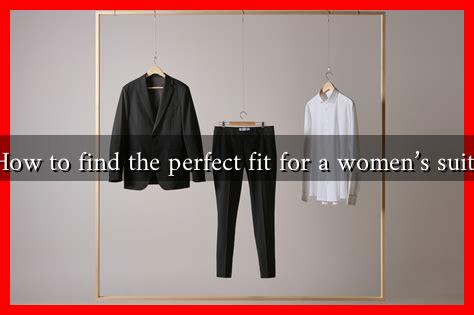-
Table of Contents
How to Find the Perfect Fit for a Women’s Suit
Finding the perfect fit for a women’s suit can be a daunting task, especially with the myriad of styles, fabrics, and cuts available in the market today. A well-fitted suit not only enhances your appearance but also boosts your confidence, making it essential to understand how to choose the right one. This article will guide you through the process of selecting a suit that fits perfectly, ensuring you look and feel your best.
Understanding Suit Components
Before diving into the fitting process, it’s crucial to understand the key components of a women’s suit. A typical suit consists of:
- Jacket: The most visible part of the suit, which can vary in length, cut, and style.
- Pants: These can be tailored in various styles, including straight-leg, wide-leg, or tapered.
- Skirt: An alternative to pants, skirts can be pencil, A-line, or pleated.
- Fabric: The material affects the suit’s drape and comfort, with options ranging from wool to polyester blends.
Measuring for the Perfect Fit
Accurate measurements are the foundation of a well-fitted suit. Here are the key measurements to take:
- Chest: Measure around the fullest part of your bust, ensuring the tape is level.
- Waist: Measure around the narrowest part of your waist.
- Hips: Measure around the fullest part of your hips.
- Inseam: Measure from the top of your inner thigh to your ankle.
- Sleeve Length: Measure from the shoulder seam to the wrist.
Consider using a professional tailor for precise measurements, especially if you are unsure about your sizing. Many retailers offer fitting services, which can be invaluable in ensuring a perfect fit.
Choosing the Right Style
Different styles of suits cater to various body types and personal preferences. Here are some popular styles to consider:
- Classic Fit: Offers a timeless silhouette, suitable for most body types.
- Tailored Fit: Provides a more fitted look, ideal for those who prefer a modern aesthetic.
- Relaxed Fit: Offers more room and comfort, perfect for casual or creative environments.
- Blazer and Trousers: A versatile option that can be mixed and matched with other pieces.
When selecting a style, consider your body shape and the occasion for which you are purchasing the suit. For instance, a tailored fit may be more appropriate for formal business settings, while a relaxed fit could work well in creative industries.
Fabric Selection
The fabric of your suit plays a significant role in its overall fit and comfort. Here are some common fabrics and their characteristics:
- Wool: Durable and breathable, ideal for year-round wear.
- Polyester: Affordable and wrinkle-resistant, but may not be as breathable.
- Linen: Lightweight and breathable, perfect for summer but prone to wrinkling.
- Silk: Luxurious and soft, but often more expensive and less durable.
Consider the climate and your personal comfort when choosing fabric. For example, wool suits are excellent for colder months, while linen is perfect for summer events.
Tailoring: The Final Touch
Even if you find a suit that fits well off the rack, tailoring can make a significant difference. Here are some common alterations:
- Jacket Length: Adjusting the length can enhance your silhouette.
- Pant Hem: Ensuring the right length can prevent bunching at the ankles.
- Waist Adjustment: Tailoring the waist can create a more flattering fit.
Investing in tailoring can elevate your suit from good to great, ensuring it complements your body shape perfectly.
Conclusion
Finding the perfect fit for a women’s suit involves understanding your measurements, choosing the right style and fabric, and considering tailoring options. By taking the time to assess these factors, you can ensure that your suit not only looks great but also feels comfortable and confident. Remember, a well-fitted suit is an investment in your professional wardrobe that can pay dividends in terms of confidence and style.
For more tips on women’s fashion and suit fitting, consider visiting resources like Vogue Fashion for the latest trends and advice.

